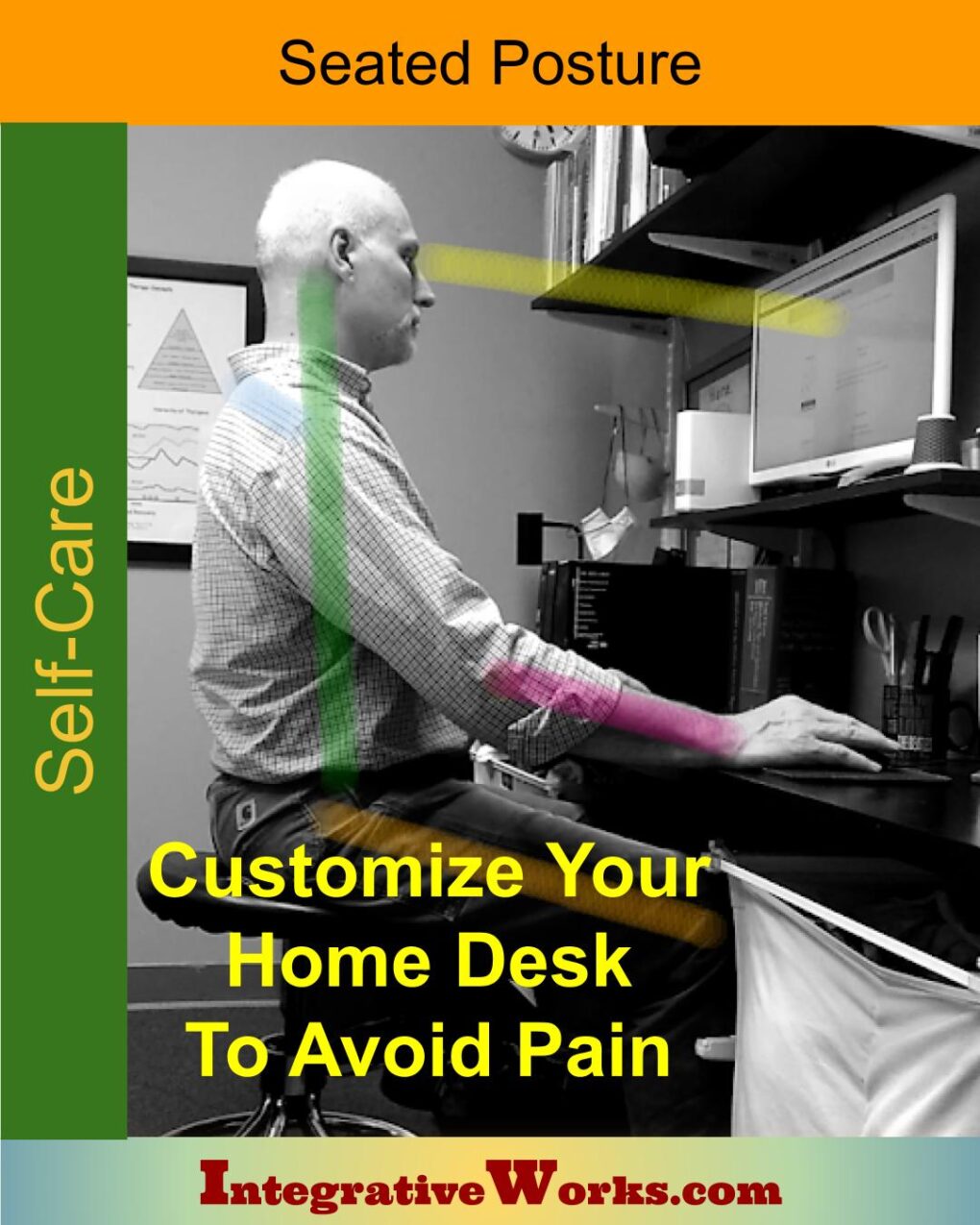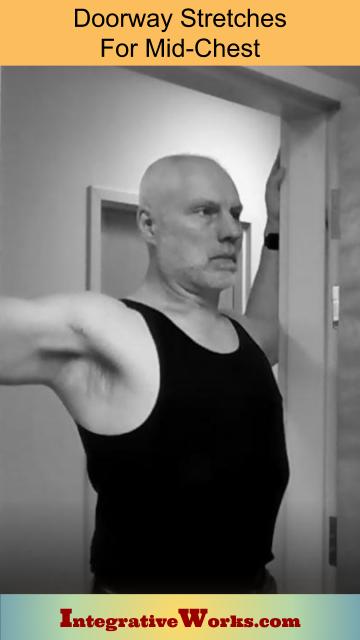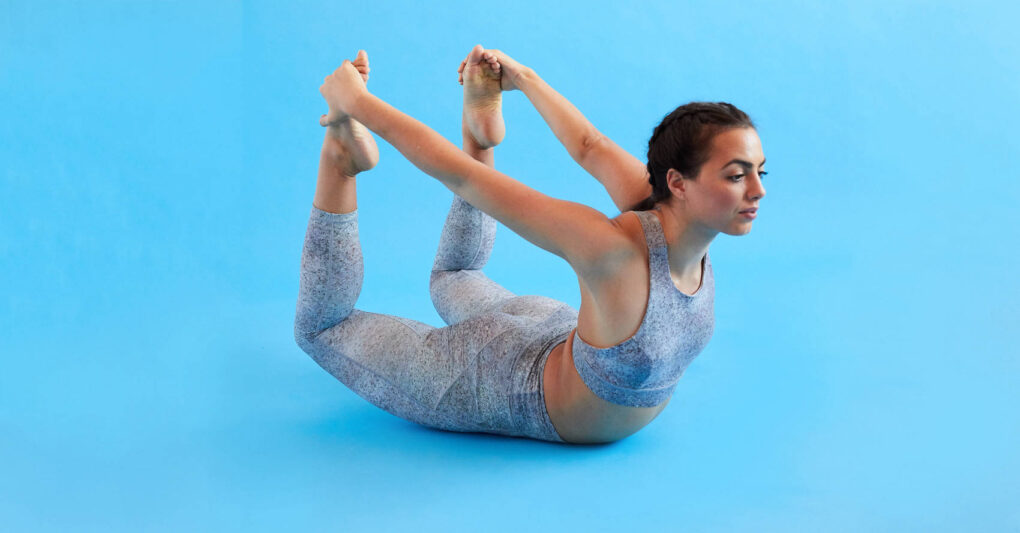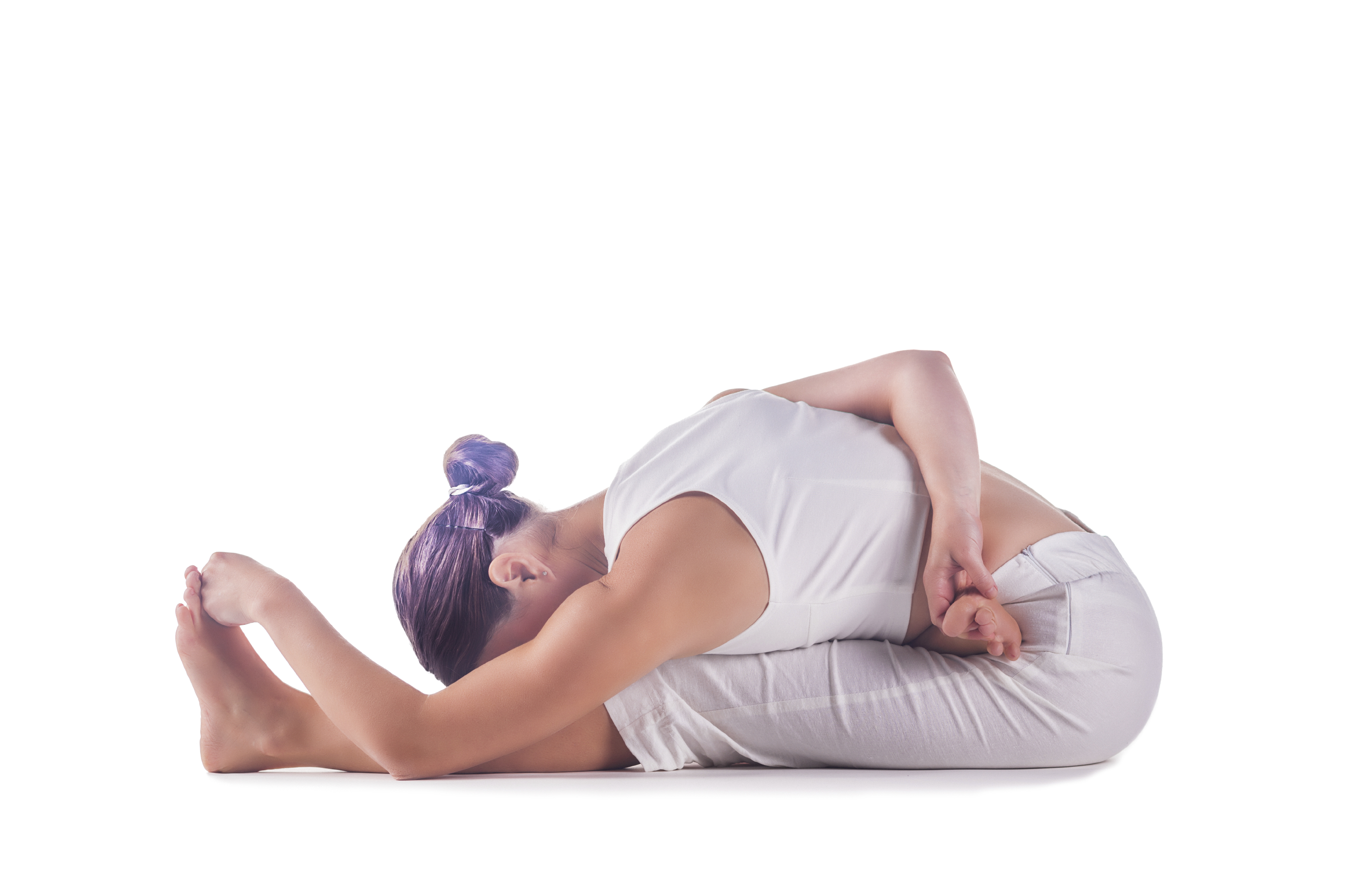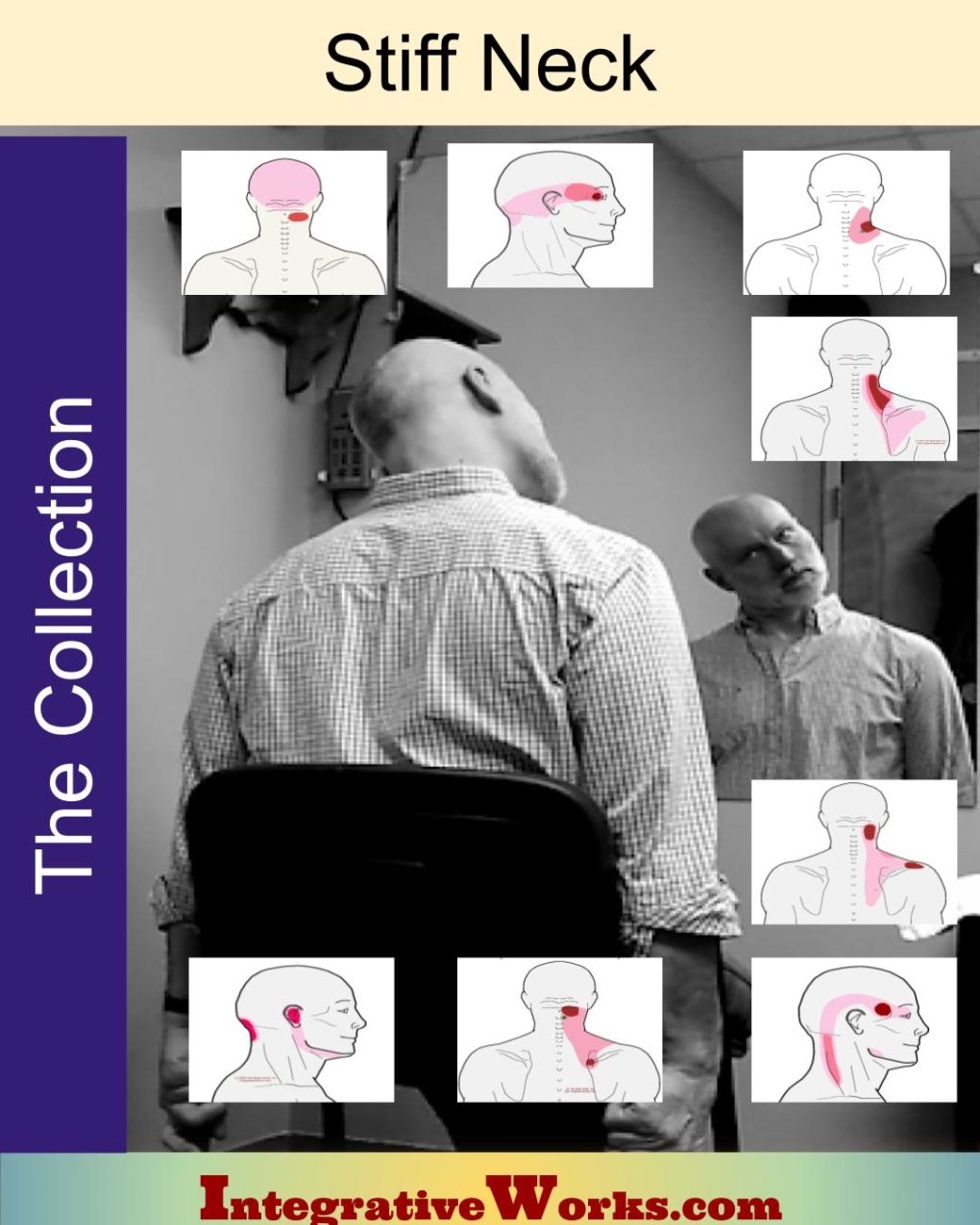Table of Contents
- Activities to Avoid or Change
- For Temporary Relief
- Stretches and Exercises for Longer-Lasting Relief
- Yoga Corner
This post has quick relief and lasting relief strategies for the trigger point that creates pain in the upper neck and top of the shoulder. This is a tough trigger point to treat and requires persistent self-care. Often, people choose professional help to make underlying structural changes, hone self-care strategies and stay focused. You can read more about how people describe the pain and what aggravates the condition in this other post.
Activities To Avoid or Change:
Pay attention to when this aggravates you the most. If it is when seated for long periods there are several things you can do.
Move
I make sure that I get up and move periodically. Traditional therapy approaches suggest things like setting a timer across the room that you get up to reset every 20 minutes or so. I use the timer and movement reminders on my Fitbit to keep me from sitting too long.
Improve the ergonomics
at your home or office.
This post offers some great ideas for actively sitting without support or sitting with supports that help you avoid pain and fatigue. There are also suggestions about a few useful accessories.
For Temporary Relief:

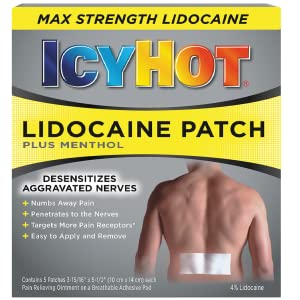
Pain Patch
If you’d like more potent relief, place a vapocoolant patch like IcyHot on the spot. The patch offers a lot of relief, even though your pain is usually above the area of the trigger point. Putting the patch over the pain will offer some relief. However, it won’t work as well as covering the trigger point. You can get these on Amazon.
Even though this will offer nice relief, stay with those chest stretches to fix the long-term problem.
These self-care activities, like over-the-counter drugs, are not intended to replace appropriate medical attention. If you have concerns about these self-care activities, get help from a professional. Use these suggestions and strategies with discretion and at your own risk. See your doctor when your pain is severe, persistent, or not responding to these simple suggestions.
Stretches and Exercises for Longer-Lasting Relief:
The stretches below are a great start and will help. Gentle, persistent exercises to build your back are a steady continuation in that direction. Just a few minutes every other day of lunges, Supermans, Aquamans, deadlifts, and hyperextensions help to create healthier, better-balanced bodies. I started employing these strategies almost 20 years ago, and it made a huge difference in getting rid of my nagging back pain.
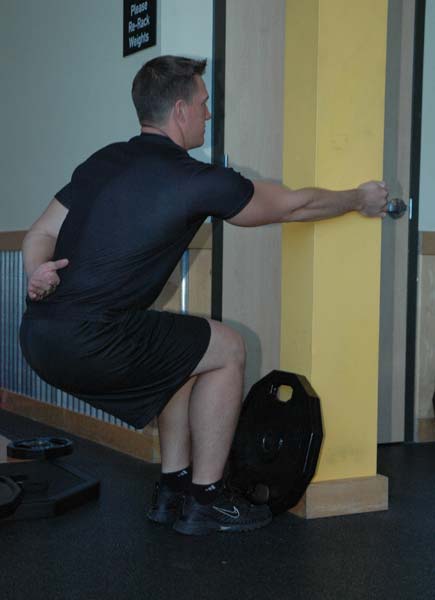
Back Stretches
If you’ve had an acute injury to this muscle, like a dog pulling you with the leash, this stretch will help to lengthen out the lower trapezius.
This stretch is a classic way to lengthen those muscles, like lats and lower traps that pull the shoulder blade back and down.
This stretch seems counterintuitive when you have upper neck pain but sensible for the sore shoulder. Remember that the trigger point that creates this pain is not close to the problematic band of muscle.
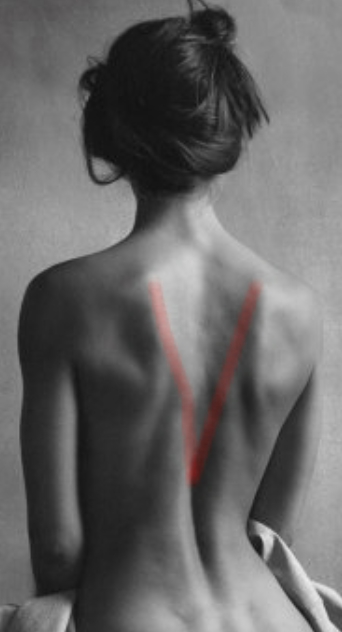
Massage
If you can get some help, have a friend rub along the edge of the lower trapezius with ice before doing the stretch shown above. Start at the top corner of the shoulder blade. Continue icing along the inside of the taut edge that runs down to the spine at the base of your ribs. In this image, I’ve highlighted that muscular edge in pink. The active trigger point is along the inside edge of this band.
Chest Stretches
Electromyographical studies show that the lower trapezius doesn’t contract to retract the shoulders. Instead, this muscle contracts to stabilize the shoulder girdle. This happens during movements when you reach up and forward and need resistance to control the shoulder blade.
These doorway stretches are an easy way to open the chest. Consequently, this releases tension in the lower trapezius. For this reason, it is effective when you have tight pecs and rounded shoulders. Also, follow up with exercises that strengthen spinal erectors help support the lower trapezius.
This, and some bodywork, are usually the ticket for lasting relief.
Do You Have Forward-Head Posture?
This muscle is often overstretched and overpowered by Forward-Head Posture. As the head moves forward, the opposing muscles become short and strong. Consequently, this muscle becomes overstretched and tight. Once the head has become imbalanced over the torso, this muscle fights to rebalance posture.
If you have Forward-Head Posture, review this collection, especially the self-care suggestions for changing your environment and the Tuck, Tilt, Turn, and Lift exercise.
I’d love your feedback on how this works for you and any suggestions you might have.
Email me at integrativeworks@gmail.com.
Yoga Corner
This pain in the upper neck and top of the shoulder occurs in two distinct postures. For significant and lasting relief, identify the short, strong muscles and lengthen them to balance your posture.
If you have a rounded upper back, chest openers are the right place to start. Look to poses like Cobra, Upward Dog, and Camel. These poses take the tension off of the chest muscles so that the lower trapezius doesn’t have to constantly tense to pull back on the shoulder blade.
Afterward, progress to more advance poses like bow pose. The grip with palms turned in will work better than reaching over the toes, in this case.
If you have an upright posture with an open chest, winged shoulder blades and tight mid-back, look for poses that open your mid-back by reaching forward and up.
You can start with simpler poses like Warrior I. Relax and focus on sliding those shoulder blades way out, away from the spine. After that, progress to poses like this half-bound lotus. It extends the shoulder further away from your low back. Keeping the elbow down along the knee will help with opening the lower trapezius
Is Your Neck Extra Stiff and Painful?
Sometimes, turning your head is strongly limited by pain. This indicates that more than one of the muscles that creates a “stiff neck” is involved. Check out these posts on a stiff neck.
In this case, if the problem does not resolve with home care, consider professional help from your bodyworker. They will offer quicker relief, have longer-lasting results, and keep you focused on effective self-care.
This pain pattern can be a tougher one to resolve on your own when the trigger point has become chronic. Your bodyworker can help you with more complete releases, postural corrections, and guidance on home exercises.
Support Integrative Works to
stay independent
and produce great content.
You can subscribe to our community on Patreon. You will get links to free content and access to exclusive content not seen on this site. In addition, we will be posting anatomy illustrations, treatment notes, and sections from our manuals not found on this site. Thank you so much for being so supportive.
Cranio Cradle Cup
This mug has classic, colorful illustrations of the craniosacral system and vault hold #3. It makes a great gift and conversation piece.
Tony Preston has a practice in Atlanta, Georgia, where he sees clients. He has written materials and instructed classes since the mid-90s. This includes anatomy, trigger points, cranial, and neuromuscular.
Question? Comment? Typo?
integrativeworks@gmail.com
Interested in a session with Tony?
Call 404-226-1363
Follow us on Instagram

*This site is undergoing significant changes. We are reformatting and expanding the posts to make them easier to read. The result will also be more accessible and include more patterns with better self-care. Meanwhile, there may be formatting, content presentation, and readability inconsistencies. Until we get older posts updated, please excuse our mess.

